Abstract
Adult blowflies (Phormia regina Meigen) injected with the octopaminergic drug demethylchlordimeform (10 μg per fly) exhibited enhanced proboscis extension responses when their tarsae were touched to water or aqueous sucrose. They drank more water than saline-injected control flies did but the quantity imbibed was within the normal fluid intake capacity. They became grossly hyperphagic when offered 1 M sucrose, doubling (and in some cases even tripling) their initial body weights. Three other drugs enhanced tarsal responsiveness and induced hyperphagia: DL-octopamine, clonidine (which is known to stimulate octopaminergic receptors in insects), and pargyline, a monoamine oxidase inhibitor. Yohimbine, an antagonist of one class of octopaminergic receptor in insects, prevented the hyperphagia induced by all four drugs. Dopamine, 5-hydroxytryptamine, and DL-norepinephrine failed to cause hyperphagia. These results suggest that octopaminergic receptors in the nervous system of the blowfly positively modulate feeding and drinking behavior.
Keywords: Phormia regina, formamidines, clonidine, hyperphagia
Full text
PDF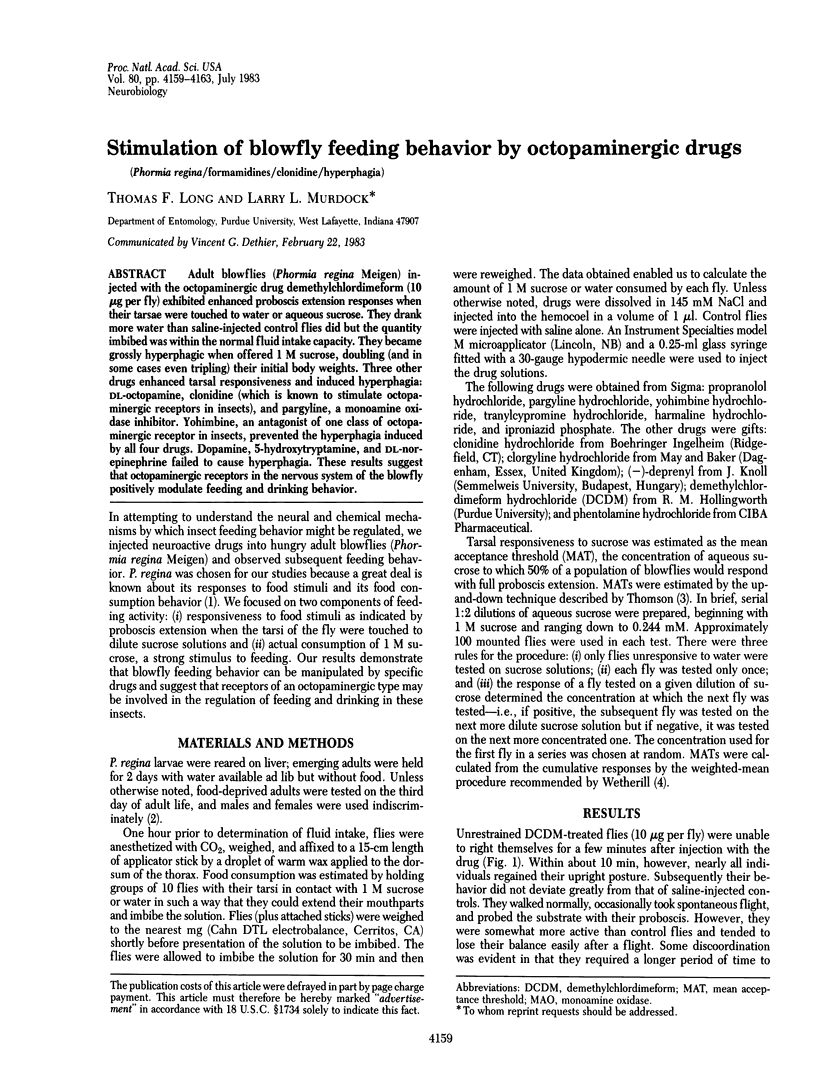
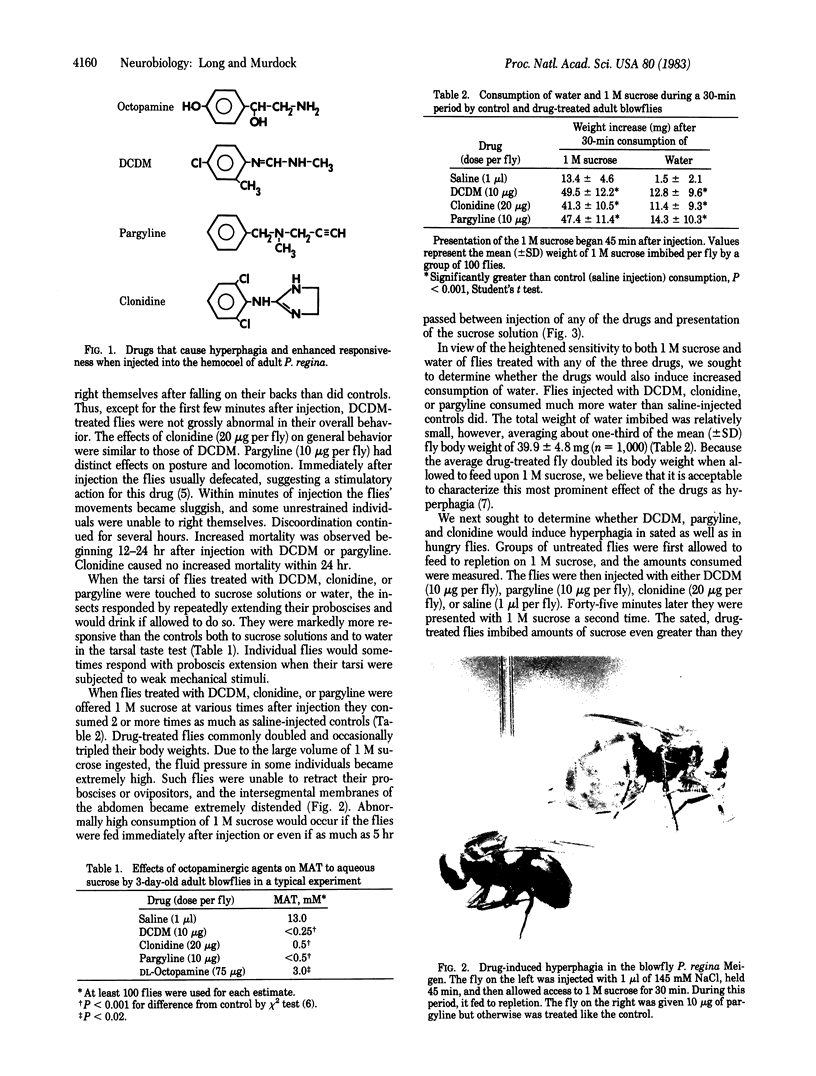
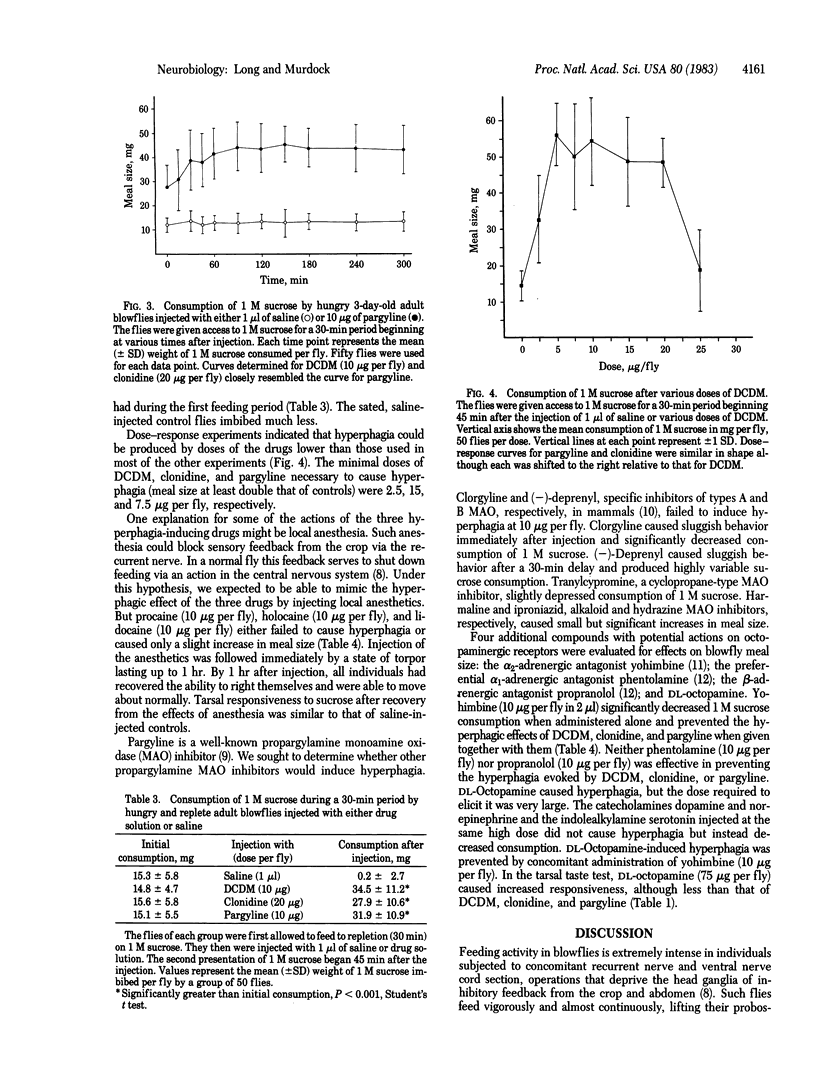
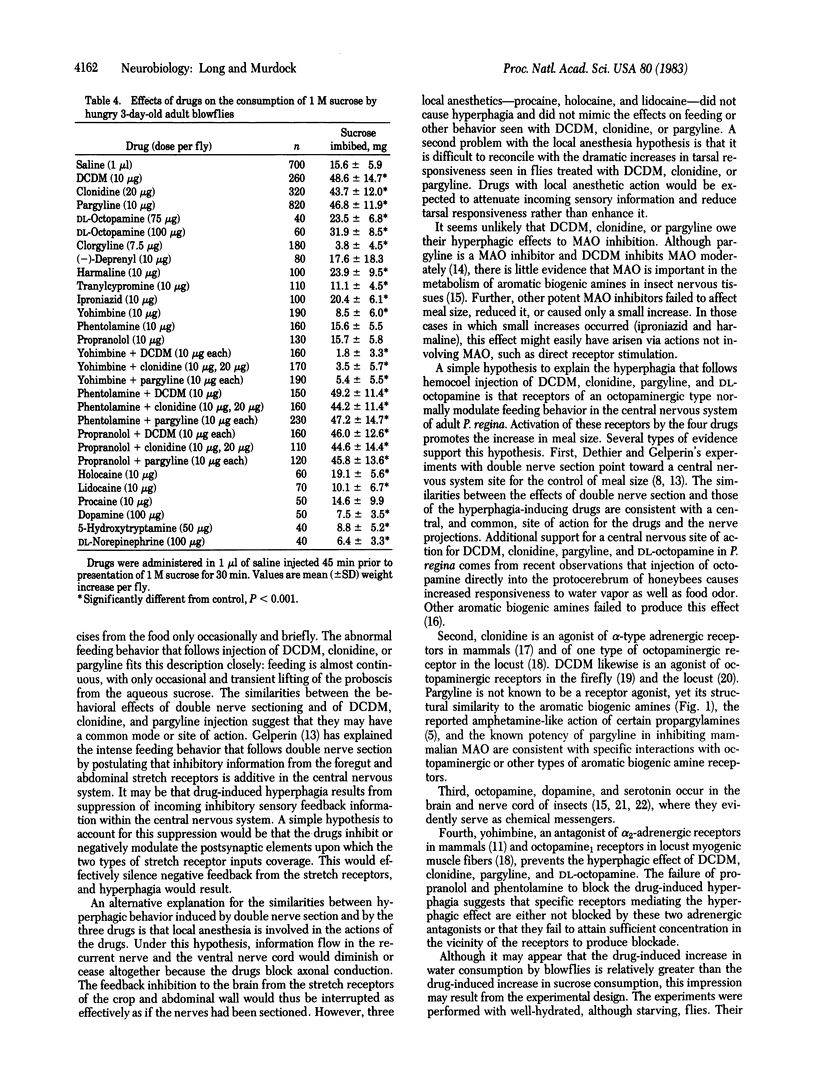
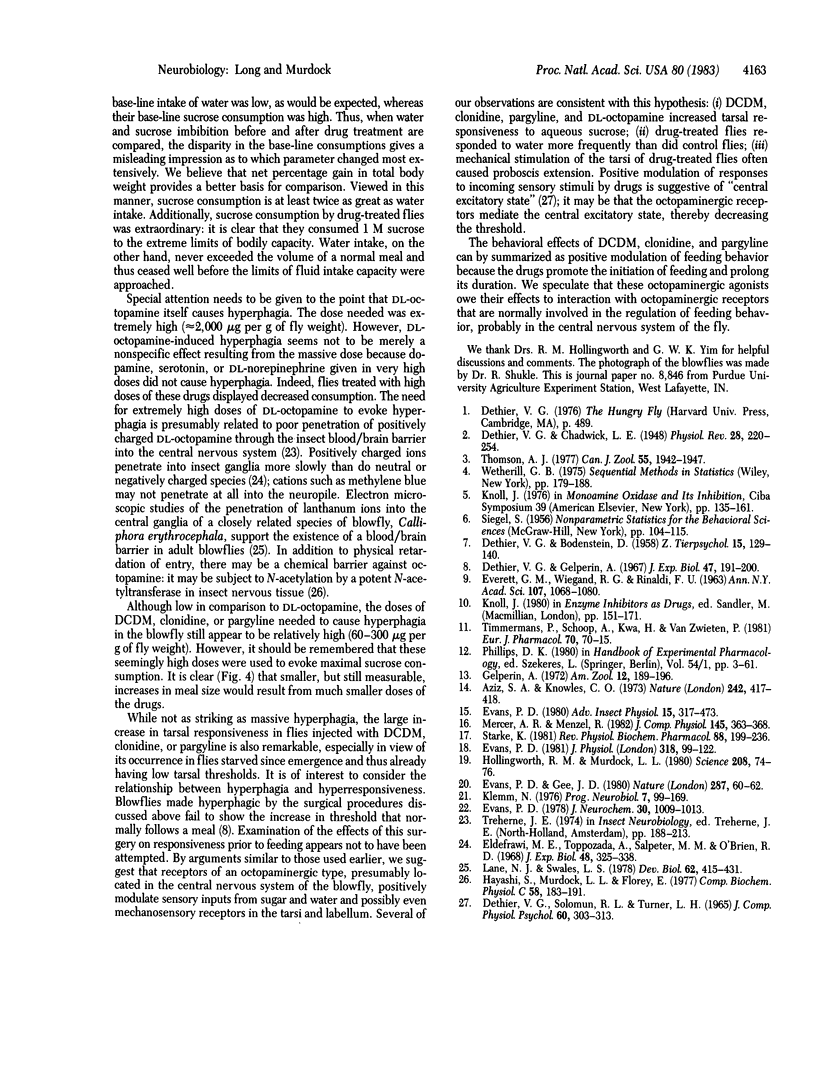
Images in this article
Selected References
These references are in PubMed. This may not be the complete list of references from this article.
- Aziz S. A., Knowles C. O. Inhibition of monoamine oxidase by the pesticide chlordimeform and related compounds. Nature. 1973 Apr 6;242(5397):417–418. doi: 10.1038/242417a0. [DOI] [PubMed] [Google Scholar]
- Dethier V. G., Solomon R. L., Turner L. H. Sensory input and central excitation and inhibition in the blowfly. J Comp Physiol Psychol. 1965 Dec;60(3):303–313. doi: 10.1037/h0022557. [DOI] [PubMed] [Google Scholar]
- Eldefrawi M. E., Toppozada A., Salpeter M. M., O'Brien R. D. The location of penetration barriers in the ganglia of the American cockroach, Periplaneta americana (L.). J Exp Biol. 1968 Apr;48(2):325–338. doi: 10.1242/jeb.48.2.325. [DOI] [PubMed] [Google Scholar]
- Evans P. D., Gee J. D. Action of formamidine pesticides on octopamine receptors. Nature. 1980 Sep 4;287(5777):60–62. doi: 10.1038/287060a0. [DOI] [PubMed] [Google Scholar]
- Evans P. D. Multiple receptor types for octopamine in the locust. J Physiol. 1981 Sep;318:99–122. doi: 10.1113/jphysiol.1981.sp013853. [DOI] [PMC free article] [PubMed] [Google Scholar]
- Hayashi S., Murdock L. L., Florey E. Octopamine metabolism in invertebrates (Locusta, Astacus, Helix): evidence for N-acetylation in arthropod tissues. Comp Biochem Physiol C. 1977;58(2C):183–191. doi: 10.1016/0306-4492(77)90102-2. [DOI] [PubMed] [Google Scholar]
- Hollingworth R. M., Murdock L. L. Formamidine pesticides: octopamine-like actions in a firefly. Science. 1980 Apr 4;208(4439):74–76. doi: 10.1126/science.208.4439.74. [DOI] [PubMed] [Google Scholar]
- Klemm N. Histochemistry of putative transmitter substances in the insect brain. Prog Neurobiol. 1976;7(2):99–169. doi: 10.1016/0301-0082(76)90014-9. [DOI] [PubMed] [Google Scholar]
- Lane N. J., Swales L. S. Changes in the blood-brain barrier of the central nervous system in the blowfly during development, with special reference to the formation and disaggregation of gap and tight junctions. Dev Biol. 1978 Feb;62(2):415–431. doi: 10.1016/0012-1606(78)90225-7. [DOI] [PubMed] [Google Scholar]
- Starke K. Alpha-adrenoceptor subclassification. Rev Physiol Biochem Pharmacol. 1981;88:199–236. [PubMed] [Google Scholar]
- Timmermans P. B., Schoop A. M., Kwa H. Y., Van Zwieten P. A. Characterization of alpha-adrenoceptors participating in the central hypotensive and sedative effects of clonidine using yohimbine, rauwolscine and corynanthine. Eur J Pharmacol. 1981 Mar 5;70(1):7–15. doi: 10.1016/0014-2999(81)90426-x. [DOI] [PubMed] [Google Scholar]



